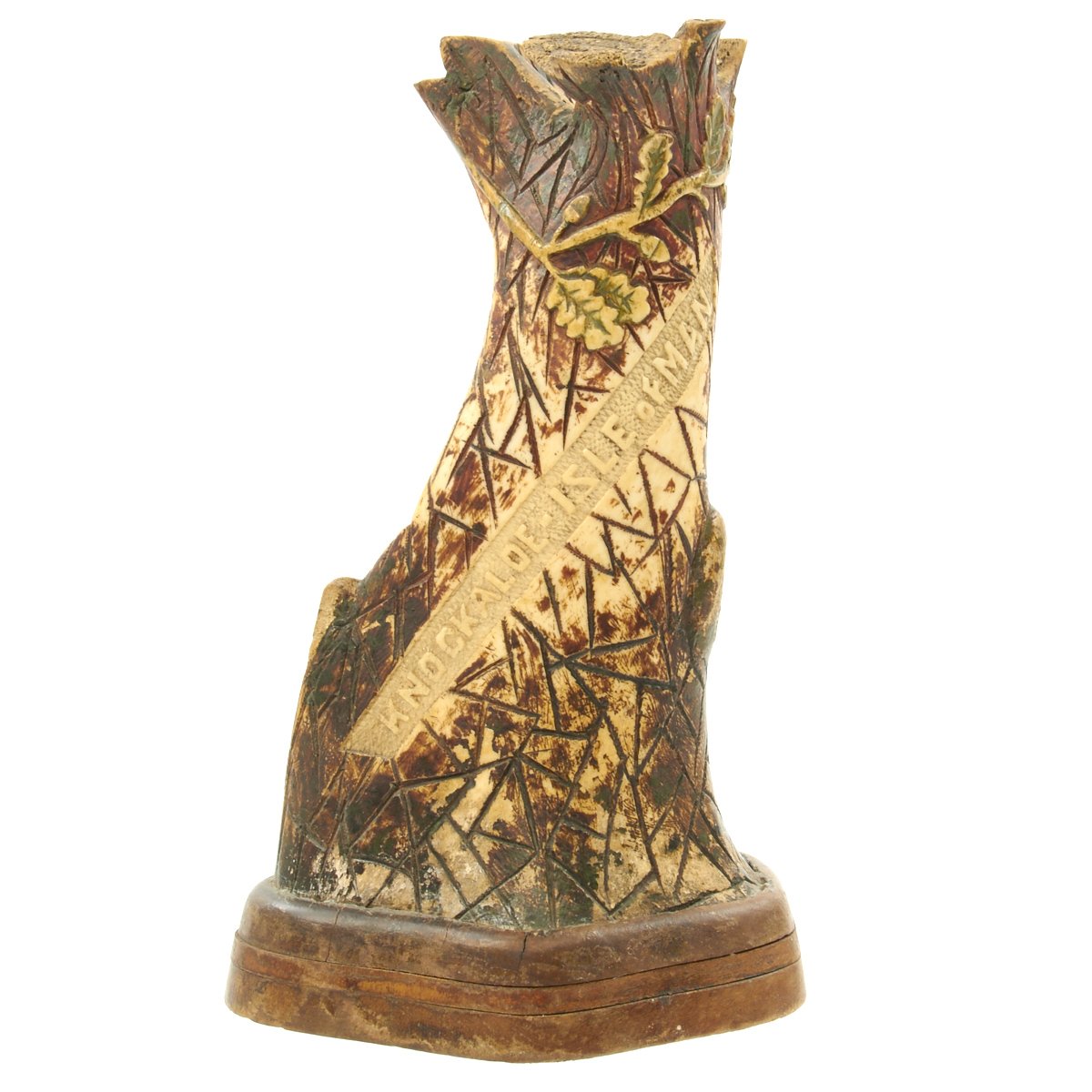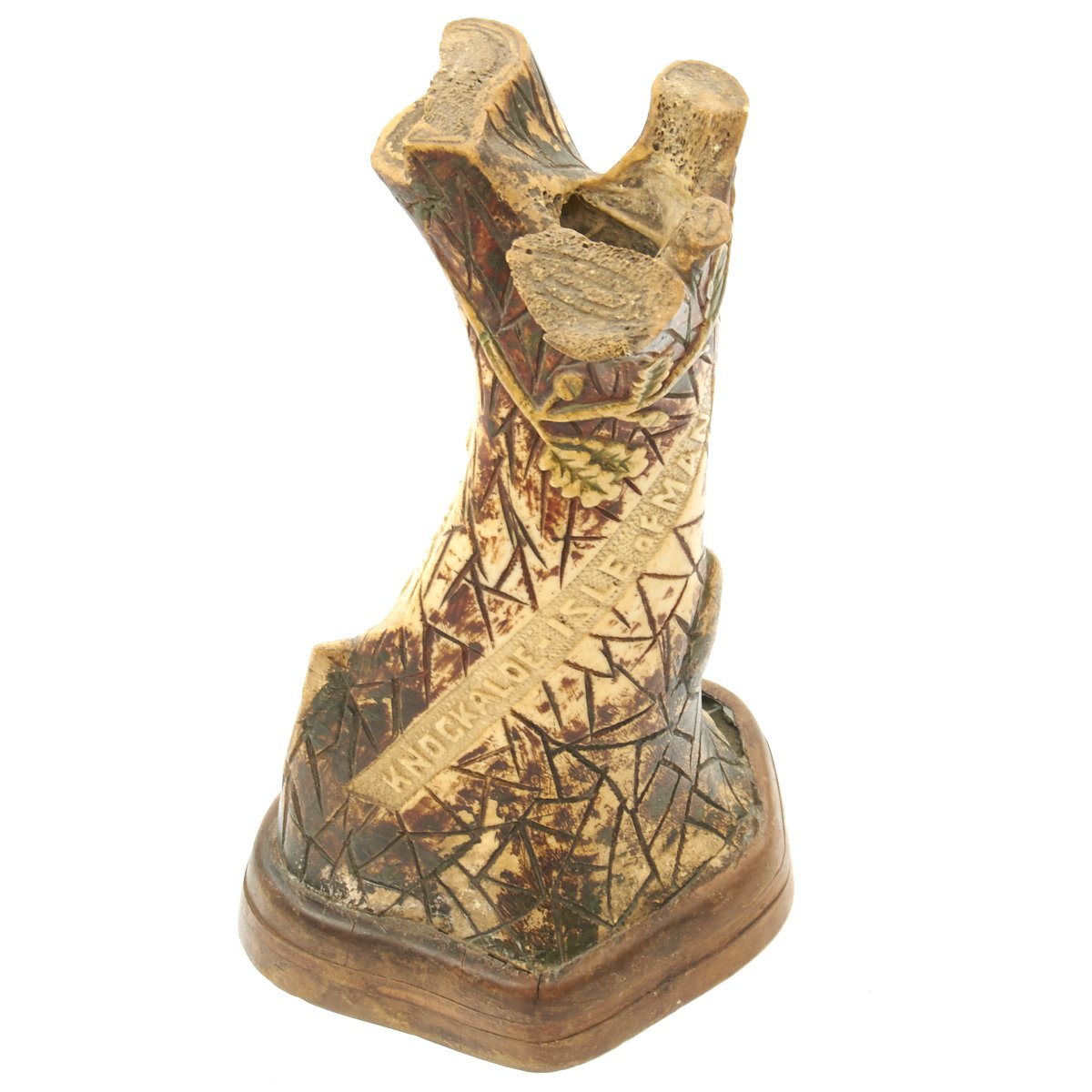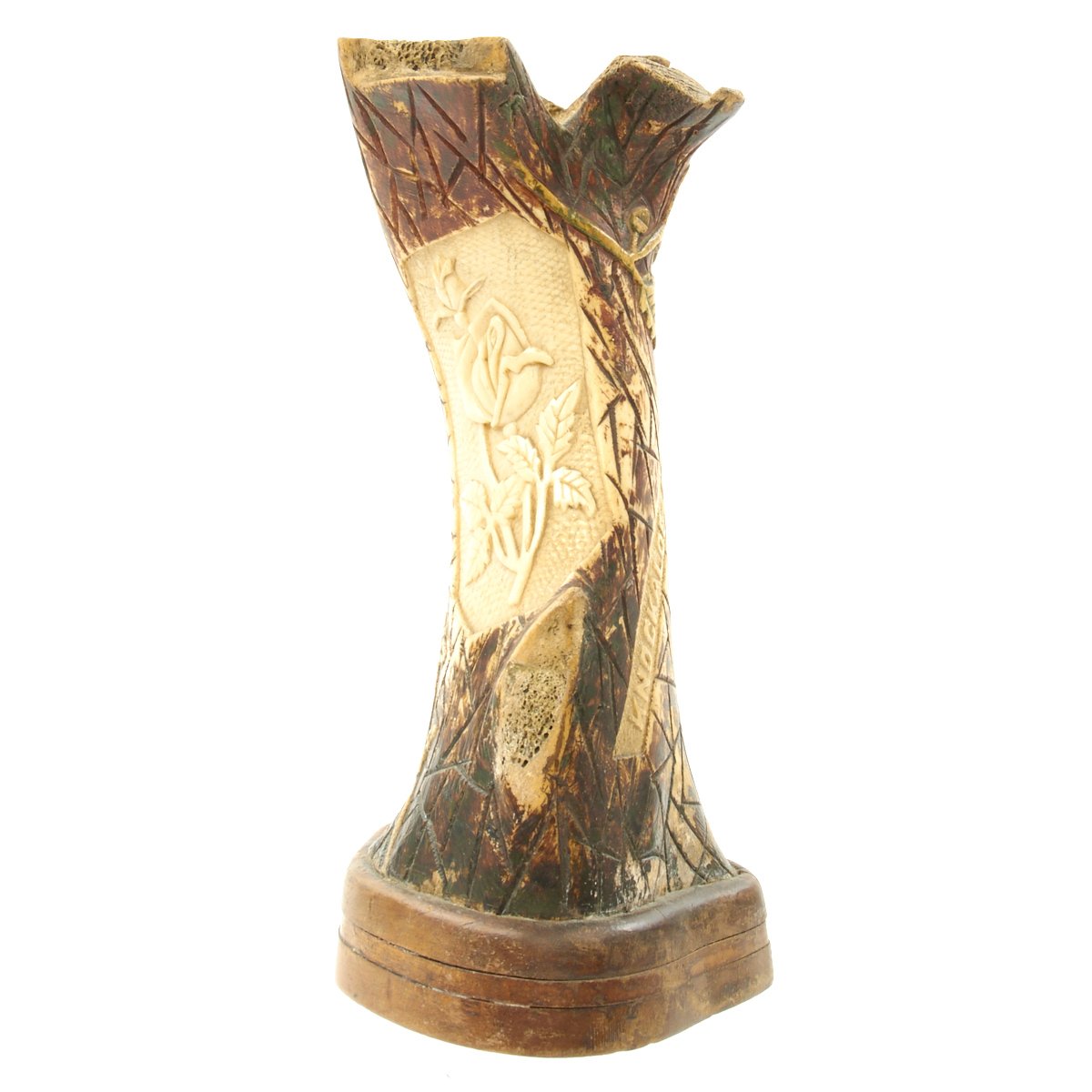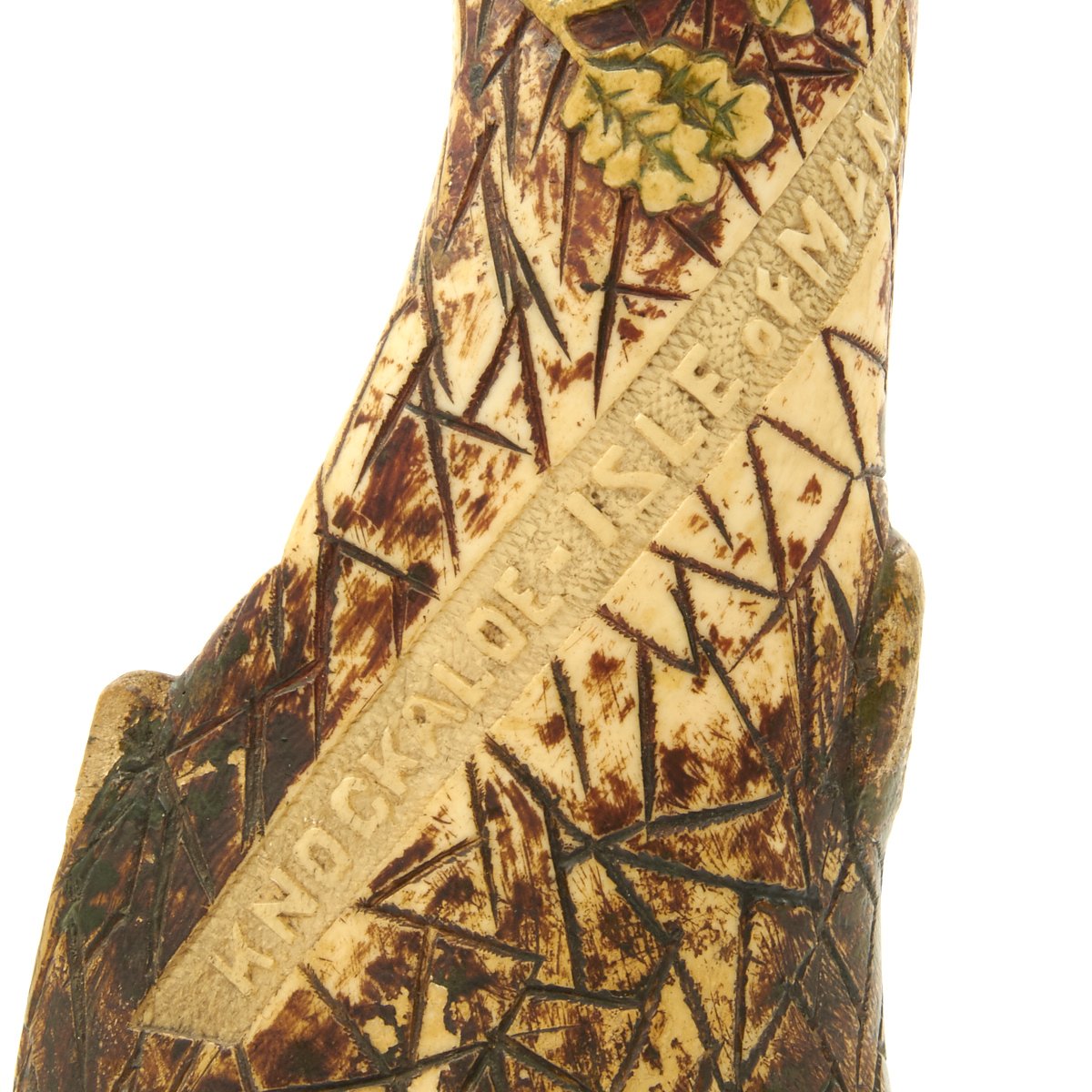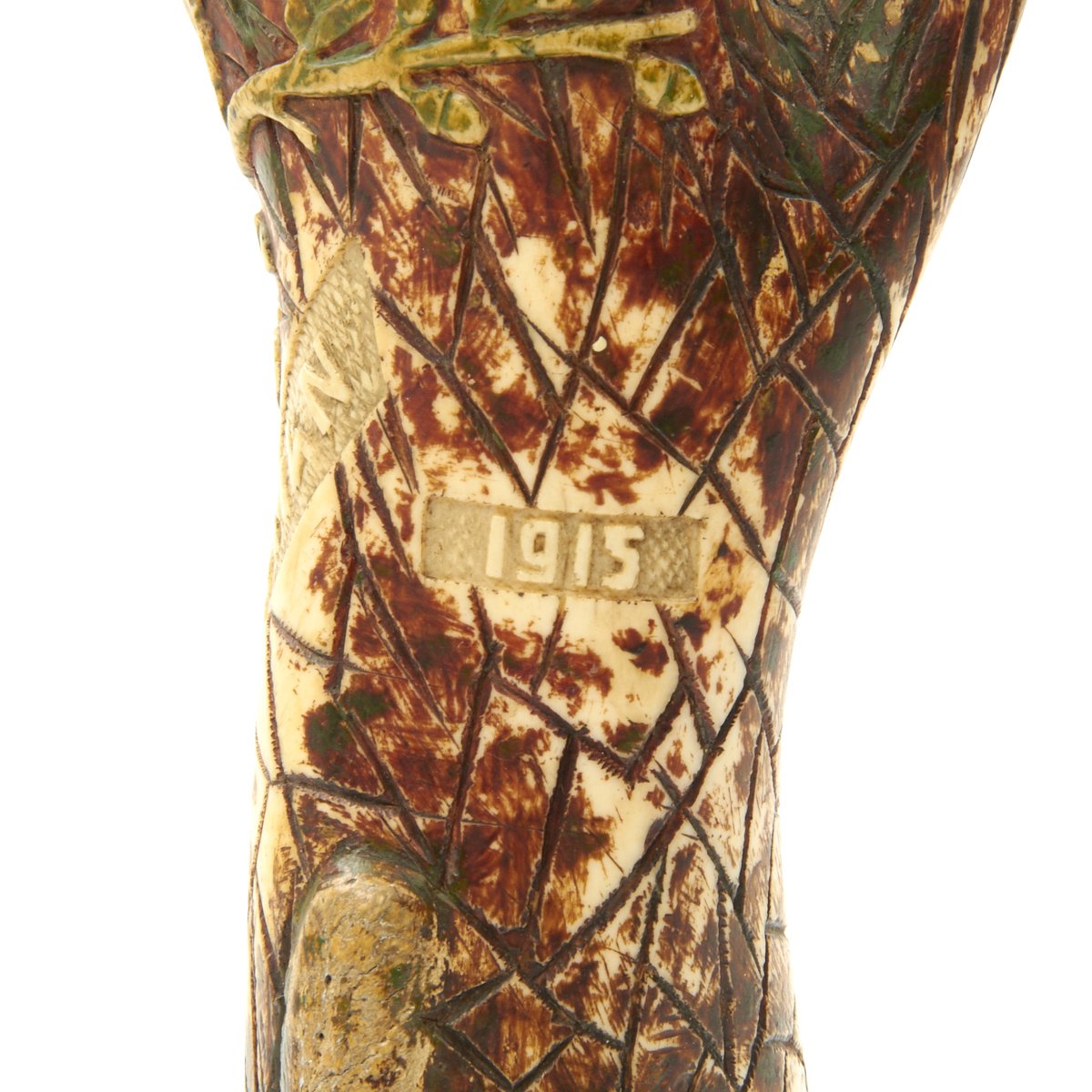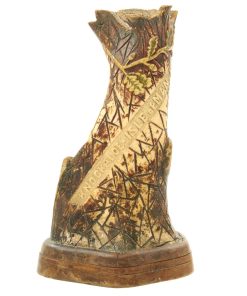Original German WWI 1915 Isle of Man Knockaloe Internment Camp Trench Art Bone Tree Trunk Carving Original Items
$ 495,00 $ 148,50
Original Item: One-of-a-kind. On 5 August 1914, the day after World War I broke out, the British Government passed the Aliens Restrictions Act, whereby the British Government could control the movement of “enemy aliens”. General internment of all Germans of military age began in May 1915 following the sinking of the “Lusitania”.
The first 200 internees arrived on the Isle of Man in September 1914 for internment in Cunninghams Camp, Douglas, however following a riot in Douglas camp leading to the death of 5 internees due to overcrowding and the poor quality of the food. Knockaloe Moar farm, a former training camp for Territorial troops, was identified as and eventually became the largest internment camp of WWI. The first of the civilian male internees arrived on 17 November 1914 and ultimately the internees were of various nationalities including German, Austrian and Turkish.
Knockaloe Camp ultimately held “nearly 24,000 prisoners in 23 compounds inside barbed wire, with 4,000 old soldiers acting as armed National Guard, and 250 civilians attending to their wants and comforts…..The camp at Knockaloe was three miles in circumference; 695 miles of barbed wire surrounded the compounds” Samuel Norris “Manx Memories and Movements”.
This is an incredibly detailed high quality carved bone from what appears to the hip of a deer that has an intricate floral design. It is carved and painted to resemble the trunk of a tree with bark and wines. Across the front it reads Knockaloe – Isle of Man 1915. The sculpture is mounted on a wood base and stands 8 inches in overall height and is 5 inches wide at the base.
Prisoners found themselves with loads of downtime and trench art or prison art was not an uncommon by product of their incarceration. However, finding pieces carved from bone in such an intricate manner with high attention to detail and color along with Great War dates is truly rare.
Fast Shipping with Professional Packaging
Thanks to our longstanding association with UPS FedEx DHL, and other major international carriers, we are able to provide a range of shipping options. Our warehouse staff is expertly trained and will wrap your products according to our exact and precise specifications. Prior to shipping, your goods will be thoroughly examined and securely secured. We ship to thousands clients each day across multiple countries. This shows how we're dedicated to be the largest retailer on the internet. Warehouses and distribution centres can be located throughout Europe as well as the USA.
Note: Orders with more than one item will be assigned a processing date depending on the item.
Before shipping before shipping, we'll conduct a thorough inspection of the items you have ordered. Today, the majority of orders will be delivered within 48 hours. The delivery time will be between 3-7 days.
Returns
The stock is dynamic and we cannot completely manage it because multiple stakeholders are involved, including our factory and warehouse. So the actual stock may alter at any time. It's possible that you may not receive your order once the order has been made.
Our policy is valid for a period of 30 days. If you don't receive the product within 30 days, we are not able to issue a refund or an exchange.
You can only return an item if it is unused and in the same state as the day you received it. You must have the item in its original packaging.
Related products
Uncategorized
Uncategorized
Armoured Fighting Vehicles of the World: AFVs of World War One (Hardcover Book) New Made Items
Uncategorized
Uncategorized
Uncategorized
Uncategorized
Uncategorized
Uncategorized
Uncategorized
Uncategorized
Uncategorized
Uncategorized
Uncategorized
Armored Burgonet Helmet & Polearm from Scottish Castle Leith Hall Circa 1700 Original Items
Uncategorized
Uncategorized
Uncategorized
